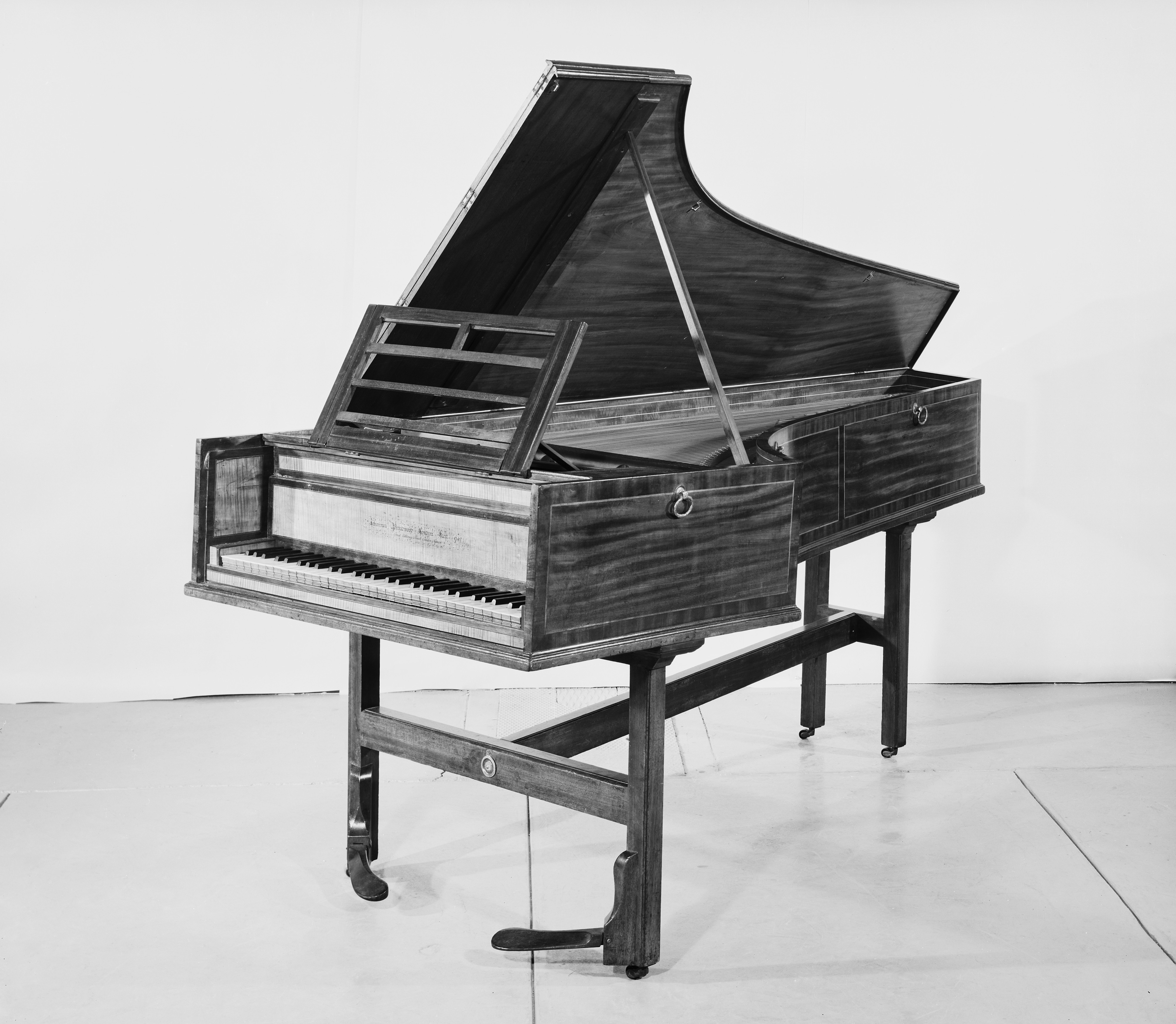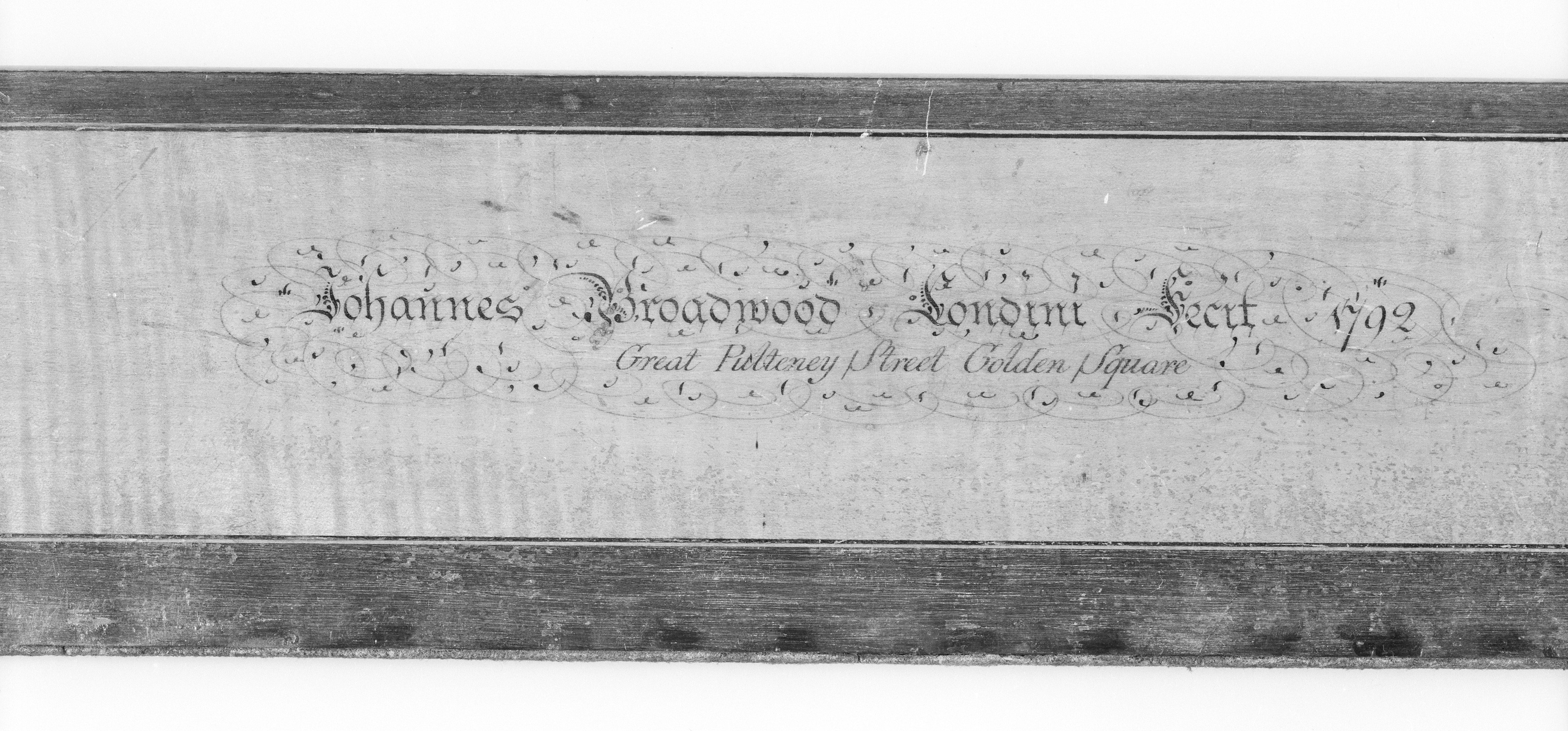Grand Piano
John Broadwood British
Not on view
In 1793 Broadwood stopped making harpsichords, but his grands still used harpsichord- like, crossbanded mahogany cases. He was among the developers of the English action for grand pianos, and was an early innovator in the use of pedals instead of knee levers for operating tone modulators. Broadwood also adopted a separate bridge for bass strings, allowing a more even distribution of tension and a more favorable striking point for the hammer to hit the string. By rationalizing the relationship of striking points to string length he achieved a more uniform tone, a distinction that would come to characterize English pianos. Broadwood's instruments were esteemed by many leading pianists of the late eighteenth and early nineteenth century including Beethoven and Haydn, who first borrowed a Broadwood grand from the composer Jan Ladislaw Dussek for a concert in 1791 and visited the factory in 1794. Thomas Jefferson was another distinguished visitor to the Broadwood factory in 1785.
Technical Description: Case of mahogany and mahogany veneer over oak, sides veneered with mahogany panels, holly wood striping and contrasting crossbanded mahogany borders, lid of solid mahogany with holly striping; nameboard, keyboard end blocks and inner surface of cheeks veneered with curly maple with black and white striping and contrasting mahogany borders; mahogany trestle stand with 4 square legs with casters; brass ring handles, lock cover with scrolled brass hinges; keyboard cover with scrolled keyhole; brass rosette in center of each short stretcher; spruce soundboard; oak pinblock veneered with curly maple; compass FF-f3 (61 keys); ivory naturals with molded keyfronts, ebony accidentals, 2 wood pedals pivoted to front legs, left pedal shifting action to the right (striking 1 or 2 strings), right pedal raising dampers; English grand action, single escapement regulated by oblong-head screws accessible behind nameboard, with backcheck, no intermediate lever; damper jacks fitting through mortised registers; leather covered hammers; triple-strung throughout, no wound strings, lowest 14 notes strung in brass; oblong, pierced tuning pins; split bridge dividing at G#-A; 3 metal gap-spacers; with music rack (b), felt-lined damper rail (c), stick to support cover (d), keyboard front cover (e). (L. Libin 1976)
Due to rights restrictions, this image cannot be enlarged, viewed at full screen, or downloaded.
This artwork is meant to be viewed from right to left. Scroll left to view more.








